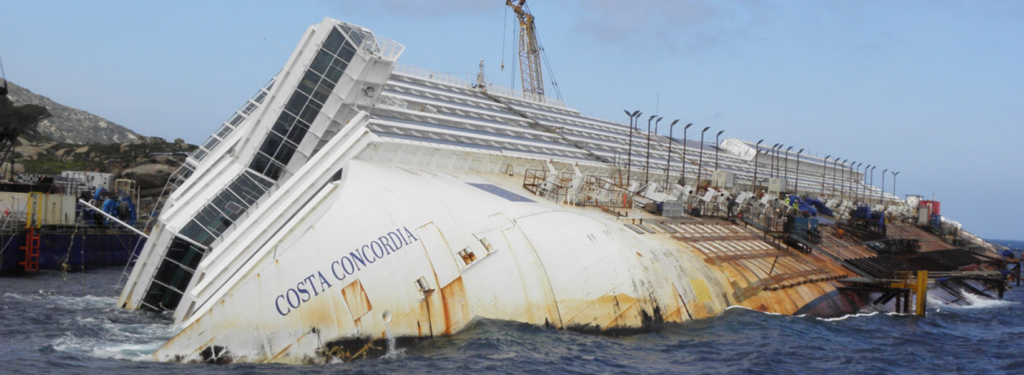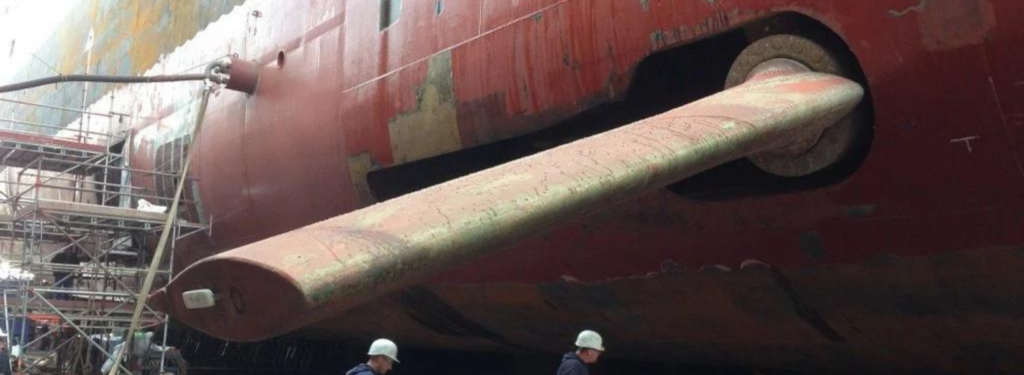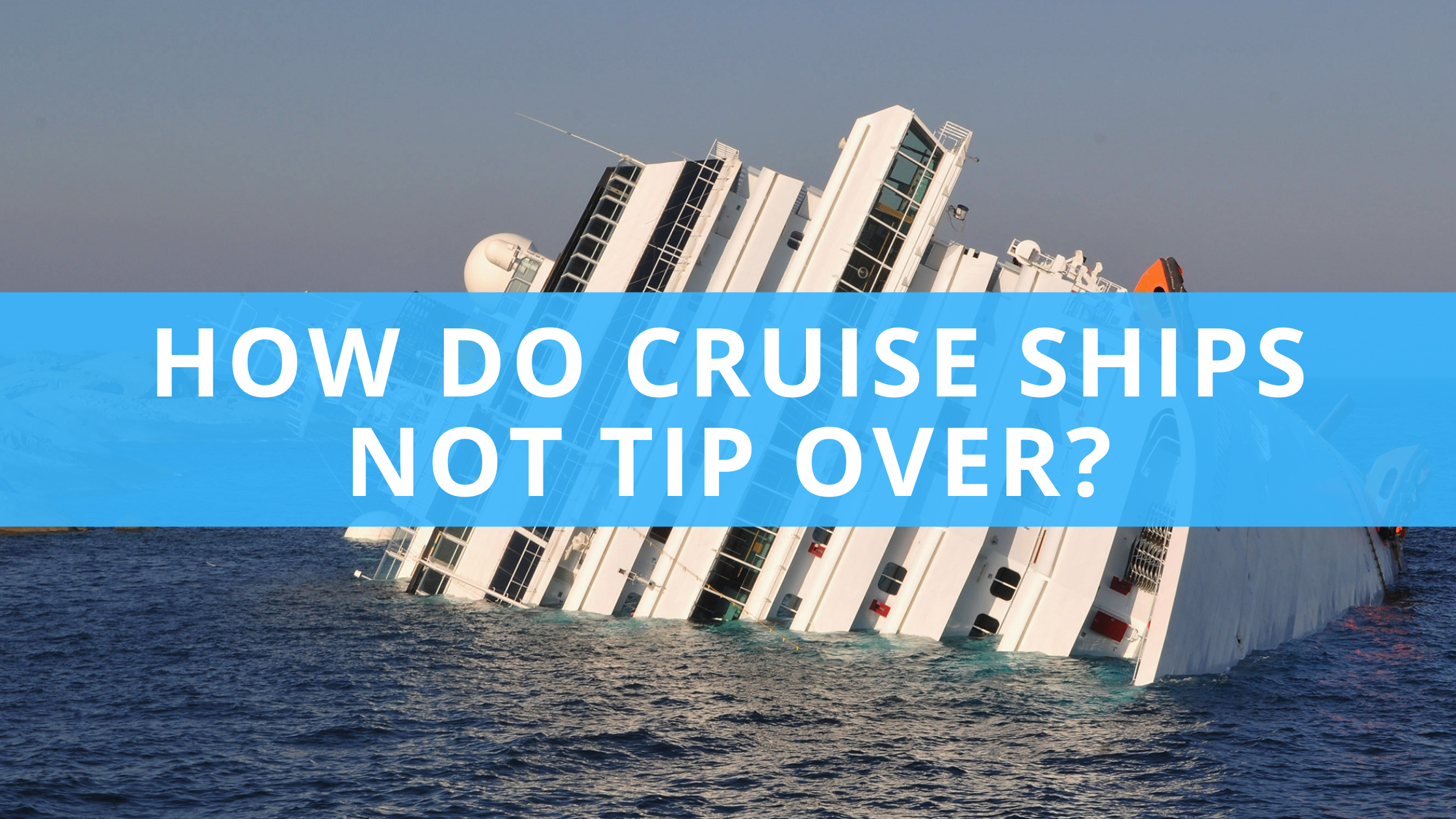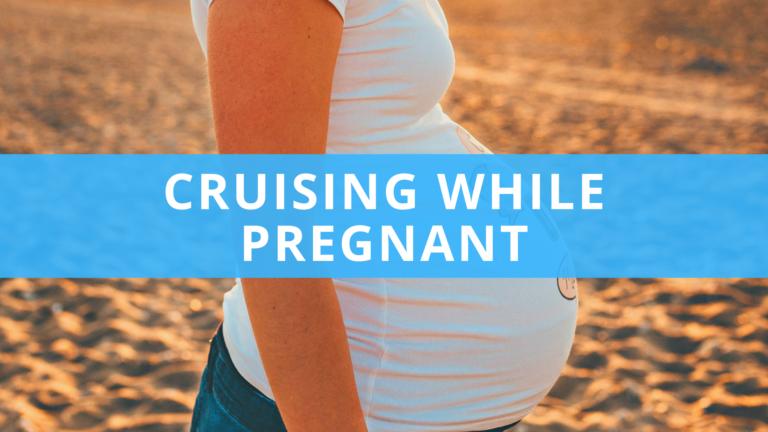How Do Cruise Ships Not Tip Over? Top 5 Surprising Reasons
Cruise ships are massive vessels that can carry thousands of passengers and crew members on extended voyages across the world’s oceans. Given their size and the fact that they are constantly moving, it’s natural to wonder “How do cruise ships not tip over”?
In fact, according to the New York Times, there were only 16 ships that sunk between the years 1980 and 2012. Here’s a closer look at how cruise ships are designed and built to stay upright, as well as five surprising facts about their stability and seaworthiness.

1. Cruise Ships Have a Low Center of Gravity
One of the key factors that contribute to a ship’s stability is its center of gravity, or the point at which the weight of the ship is evenly distributed. A ship with a low center of gravity will be less prone to tipping over, while a ship with a high center of gravity is more vulnerable to capsizing.
Cruise ships are designed with a low center of gravity in mind, with heavy components such as engines and fuel tanks located as low in the ship as possible. This helps to keep the weight of the ship evenly distributed and prevents it from becoming top-heavy.
2. Cruise Ships Have a Wide Beam
Another factor that contributes to a ship’s stability is its beam, or width. A ship with a wide beam will be more stable than a ship with a narrow beam, as it has a larger base of support and is less prone to tipping over.
Cruise ships are typically built with a wide beam, which helps to keep them stable in rough seas. This is especially important when the ship is fully loaded with passengers and cargo, as the additional weight can increase the risk of capsizing.
3. Cruise Ships Have Ballast Tanks
In order to maintain their stability, cruise ships are equipped with ballast tanks, which are large, watertight compartments located in the ship’s hull. These tanks can be filled with water to help adjust the ship’s center of gravity and keep it upright.
For example, if a ship is sailing in rough seas and is at risk of capsizing, the crew may choose to fill the ballast tanks to help lower the ship’s center of gravity and stabilize it. On the other hand, if the ship is sailing in calm waters and is in danger of becoming top-heavy, the crew may choose to empty the ballast tanks to help raise the ship’s center of gravity and keep it upright.
4. Cruise Ships Have Stabilizers

In addition to ballast tanks, many cruise ships are also equipped with stabilizers, which are large fins located on the ship’s hull. These fins can be extended into the water to help reduce the ship’s roll, or side-to-side movement, in rough seas.
Stabilizers are particularly useful when a ship is sailing in rough weather, as they help to keep the ship stable and prevent it from tipping over. They are also useful when the ship is docked, as they help to keep it stationary and prevent it from swaying in the wind.
5. Cruise Ships Are Built to Withstand Rough Seas
Despite their size and the fact that they are constantly moving, cruise ships are actually quite durable and are built to withstand rough seas. They are constructed using strong, high-quality materials and are designed to withstand the forces of the ocean, including strong winds, rough waves, and even ice.
In fact, many cruise ships are built to withstand waves up to 30 feet (9 meters) in height, and some are even equipped with ice-strengthened hulls to allow them to sail in polar regions. This means that while cruise ships may experience some rocking and rolling in rough seas, they are generally able to stay upright and continue on their voyage without incident.
How Do Cruise Ships Not Tip Over?
So in conclusion, how do cruise ships not tip over? Cruise ships are able to stay upright and avoid tipping over thanks to a number of design and engineering features. These include a low center of gravity, a wide beam, ballast tanks, stabilizers, and a sturdy, seaworthy construction.
While it’s natural to wonder how these massive vessels are able to remain stable on the open ocean, the truth is that they are carefully designed and built to withstand rough seas and remain upright even in the most challenging conditions.
FAQs
How likely is it for a cruise ship to tip over?
The likelihood of a cruise ship capsizing, or tipping over, is extremely low.
While it’s natural to wonder how do cruise ships not tips over, the truth is that they are carefully designed and built to withstand rough seas and remain upright even in the most challenging conditions.
In fact, many cruise ships are built to withstand waves up to 30 feet (9 meters) in height, and some are even equipped with ice-strengthened hulls to allow them to sail in polar regions.
Additionally, cruise ships have a number of features that help to keep them stable, including a low center of gravity, a wide beam, ballast tanks, and stabilizers. These features work together to evenly distribute the ship’s weight and prevent it from becoming top-heavy or unstable in rough seas.
Can a cruise ship tip over in a storm?
It is theoretically possible for a cruise ship to tip over, or capsize, in a storm, but it is highly unlikely.
While storms can create rough seas and strong winds that can affect a ship’s stability, cruise ships are designed and built to withstand these conditions.
They have a low center of gravity, a wide beam, ballast tanks, and stabilizers, all of which help to evenly distribute the ship’s weight and prevent it from becoming top-heavy or unstable in rough seas.
Additionally, many cruise ships are built to withstand waves up to 30 feet (9 meters) in height, and some are even equipped with ice-strengthened hulls to allow them to sail in polar regions. As a result, it would take an extremely severe storm to cause a cruise ship to capsize.
Have any cruise ships tipped over?
While it is highly unlikely for a cruise ship to tip over, or capsize, there have been a few instances in which this has occurred.
One of the most well-known examples is the Costa Concordia disaster, which occurred in 2012 when the ship ran aground off the coast of Italy and capsized, killing 32 people. However, it’s important to note that this was a rare and unusual incident and not representative of the stability of cruise ships in general.
Other examples of cruise ships capsizing include the MV Explorer, which sank in the Antarctic Ocean in 2007 after striking an iceberg, and the Seabourn Spirit, which was hit by a rogue wave in 2005 and suffered minor capsizing. In both of these cases, however, the ships were able to stay afloat and evacuate passengers and crew members safely.
Overall, while it is theoretically possible for a cruise ship to capsize, it is extremely rare and the likelihood of it occurring is very low.
Can a wave flip a cruise ship?
It is theoretically possible for a wave to flip a cruise ship, but it would have to be an extremely large and powerful wave to do so. While storms and rough seas can create waves that can affect a ship’s stability, most cruise ships are designed and built to withstand these conditions.
Additionally, many cruise ships are built to withstand waves up to 30 feet (9 meters) in height, and some are even equipped with ice-strengthened hulls to allow them to sail in polar regions.
In general, waves that are large enough to flip a cruise ship are extremely rare and are more likely to occur in extreme weather conditions, such as during a tropical cyclone or a tsunami.
How far can a ship tip before capsizing?
The maximum angle at which a ship can tip, or heel, before capsizing, or flipping over, depends on a number of factors, including the ship’s design, the distribution of its weight, and the conditions of the sea. In general, ships are designed to have a certain maximum heel angle, known as the “angle of loll,” beyond which they become unstable and are at risk of capsizing.
For most ships, the angle of loll is around 15-20 degrees, although it can vary depending on the specific design of the vessel. This means that a ship can heel, or tip, up to this angle without capsizing. However, if the ship continues to heel beyond this angle, it becomes increasingly unstable and may be at risk of capsizing.
It’s important to note, however, that the angle of loll is just a theoretical limit and does not necessarily indicate the point at which a ship will definitely capsize. In reality, the likelihood of a ship capsizing depends on a number of other factors, including the ship’s stability and seaworthiness, the size and strength of the waves it is encountering, and the actions of the crew.
Now that you know the answer to “How do cruise ships not tip over?” go check out my article on what happens if you fall off a cruise ship.
- What to Wear in Cancun by Month & Activity (And Not!) - March 13, 2023
- What to Wear in New York by Month & Activity (And Not!) - March 13, 2023
- What to Wear in Morocco by Month & Activity (And Not!) - March 13, 2023






